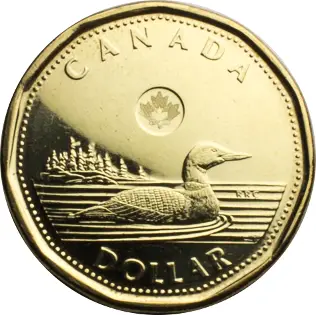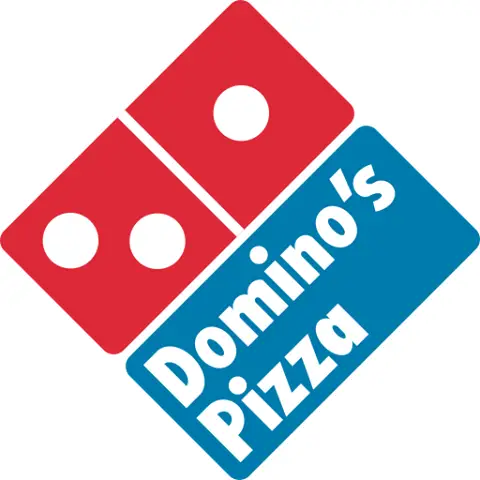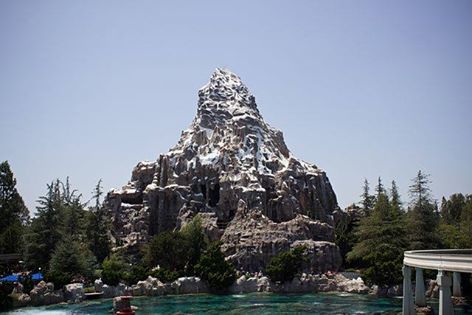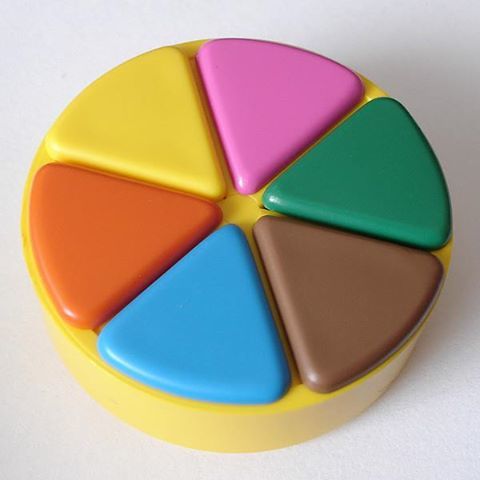 In this week’s Random Facts edition: A Misplaced Coin Design, the Domino’s Logo, Disneyland’s Hidden Basketball Court, the Start of Trivial Pursuit, the English Word with the Most Meanings.
In this week’s Random Facts edition: A Misplaced Coin Design, the Domino’s Logo, Disneyland’s Hidden Basketball Court, the Start of Trivial Pursuit, the English Word with the Most Meanings.  Canada has a one-dollar coin, affectionately called “the loonie”. It was introduced in 1987 to replace the paper one-dollar bill in Canada. But something strange happened to the loonie on its way to being produced. The die to the new design, the one that would be used to strike the new coins, got lost. The loon that is currently on the one-dollar coin was originally supposed to be a different design, but the original dies were lost in transit. In 1986, the dies were supposed to be going to a Winnipeg production facility from Ottawa, where they were made, but they never made it.
Canada has a one-dollar coin, affectionately called “the loonie”. It was introduced in 1987 to replace the paper one-dollar bill in Canada. But something strange happened to the loonie on its way to being produced. The die to the new design, the one that would be used to strike the new coins, got lost. The loon that is currently on the one-dollar coin was originally supposed to be a different design, but the original dies were lost in transit. In 1986, the dies were supposed to be going to a Winnipeg production facility from Ottawa, where they were made, but they never made it.
The first problem discovered during the investigation of the lost die was that a courier service had been used to transport the dies. They should have been shipped by a high-security service, such as those that use armored trucks, as that was the proper procedure. The second problem was that no one asked to see the credentials of the courier picking up the highly valuable shipment. In addition to that, each die that had the front and back of the coin were put into one single shipment when they were delivered.
The conclusion of the Royal Canadian Mounted Police was that the dies were lost during shipment but because of the possibility that someone could illegally use the dies to strike their own coins, the Royal Canadian Mint had to redesign the coin from scratch. The Mint was able to release the newly designed coin in time for the original release date of the first coin in June of 1987. The new coin got the name “the loonie” because of the misstep by the Mint. Source, Source
 Domino’s Pizza is one of the largest pizza chains in the world, and you might be surprised to learn that the dots on their iconic domino really do mean something. The three dots on the domino in the Domino’s Pizza logo represent the first three stores of the chain. When the logo was created in the 1960s, three dots were placed on the red domino to represent the three stores that were open at that time. The plan was to add a dot whenever a new store opened, but this was quickly abandoned because as Domino’s success grew, there was no way to place that many dots.
Domino’s Pizza is one of the largest pizza chains in the world, and you might be surprised to learn that the dots on their iconic domino really do mean something. The three dots on the domino in the Domino’s Pizza logo represent the first three stores of the chain. When the logo was created in the 1960s, three dots were placed on the red domino to represent the three stores that were open at that time. The plan was to add a dot whenever a new store opened, but this was quickly abandoned because as Domino’s success grew, there was no way to place that many dots.
The logo has gone through a couple of changes. Domino’s flipped the logo on its side in 1987, and in 2012, they removed the word “pizza” and changed a portion of the domino to blue. Domino’s currently has a little more than 11,600 restaurants worldwide. That would have made for one crowded domino if they had stuck with their original plan. Source
 Inside the Matterhorn Mountain at Disneyland there is a small basketball court. Strange, but true. The court is in a space at the top complete with a backboard, rim, and basketball floor.
Inside the Matterhorn Mountain at Disneyland there is a small basketball court. Strange, but true. The court is in a space at the top complete with a backboard, rim, and basketball floor.
Legend has it that Walt Disney skirted an Anaheim, California city ordinance that said buildings couldn’t go above a certain height when constructed, but the ordinance didn’t include sports facilities. It’s said that Disney constructed the basketball court so the Matterhorn could get around the height requirement for buildings imposed by the city. Unfortunately the legend isn’t true. Construction on the Matterhorn was completed in 1959 but the city of Anaheim didn’t have an ordinance on building height until the 1970s.
The court is about a third of a full basketball court and was built to fill unused space in the upper parts of the mountain. Disney even approved of the court and at some point the basketball hoop was installed. The area is used almost as a backstage area by employees whose job it is to climb on the mountain as part of the ride, and they can play basketball during their down time. Source, Source
 In 1979, two Canadians created one of the most popular games of all time, the game of Trivial Pursuit. The game was invented by Chris Haney, a photo editor at the Montreal Gazette, and Scott Abbott, a sports editor for the The Canadian Press, while they were sitting at Haney’s kitchen table playing Scrabble. They decided to make their own board game and came up with a new one in 45 minutes. The pair drew out the familiar wagon wheel game board on a napkin.
In 1979, two Canadians created one of the most popular games of all time, the game of Trivial Pursuit. The game was invented by Chris Haney, a photo editor at the Montreal Gazette, and Scott Abbott, a sports editor for the The Canadian Press, while they were sitting at Haney’s kitchen table playing Scrabble. They decided to make their own board game and came up with a new one in 45 minutes. The pair drew out the familiar wagon wheel game board on a napkin.
Haney moved to Spain with his wife after quitting his job in 1980 and began to research questions for the game–6,000 in fact. The game’s original title was even going to be Six Thousand Questions. Haney and Abbott were able to secure funding for their new game from 30 investors in $1,000 shares and found a manufacturer for the game. In 1981, the game was released.
Debut sales of the game in Canada were slow, and it cost $75 to make while it only sold for $15. It wasn’t until the game got a boost from a marketing consultant named Linda Pezzano that it began to take off. Pezzano sent it to celebrities and began to hold game sessions in bars and restaurants which got the word out about the game. By 1984, 20 million copies of Trivial Pursuit had been sold, and the game became a worldwide hit.
Trivial Pursuit has sold 100 million copies around the world since its inception, and Hasbro bought the rights to the game in 2008 for $80 million. There are 42 editions of the game, and it has been translated into 17 languages. Source, Source
 What word is the workhorse of the English language? According to the Oxford English Dictionary, that prize would go to the English word “run” which has 645 meanings, and that is just the word in the verb form. The previous title holder for the most meanings was the word “put”, and before that it was the word “set”.
What word is the workhorse of the English language? According to the Oxford English Dictionary, that prize would go to the English word “run” which has 645 meanings, and that is just the word in the verb form. The previous title holder for the most meanings was the word “put”, and before that it was the word “set”.
When the Oxford English Dictionary was first printed in 1928, the word “set” and its many meanings took up 32 pages which equated to around 200 meanings. At some point later, the word “put” took over as the word with the most meanings. The first four letter word with the most meanings just happens to be “take”.
Lexicographers, which are the people that compile dictionaries, have a few theories on the reason for the explosion of the meanings for the word “run” though there is no definitive answer. New meanings of the word “run” could be partially attributed to the rise of the Industrial Revolution as all types of machines began to “run”, but new meanings for the word “run” might have come from older meanings as they were updated to fit with the changing, more energetic times. “Set” and “put” just seem slow in comparison for the many meanings we need today.
To show how easy it is to come up with different meanings for the word “run”, take these examples: Run around, a clock runs, “I have to run”, run something by someone, to run something through as with a sword, run a temperature, running water, a computer runs a program, and the list goes on and on. How many different meanings can you come up with? Good luck. Source, Source
Here’s more Random Facts of the Week.

